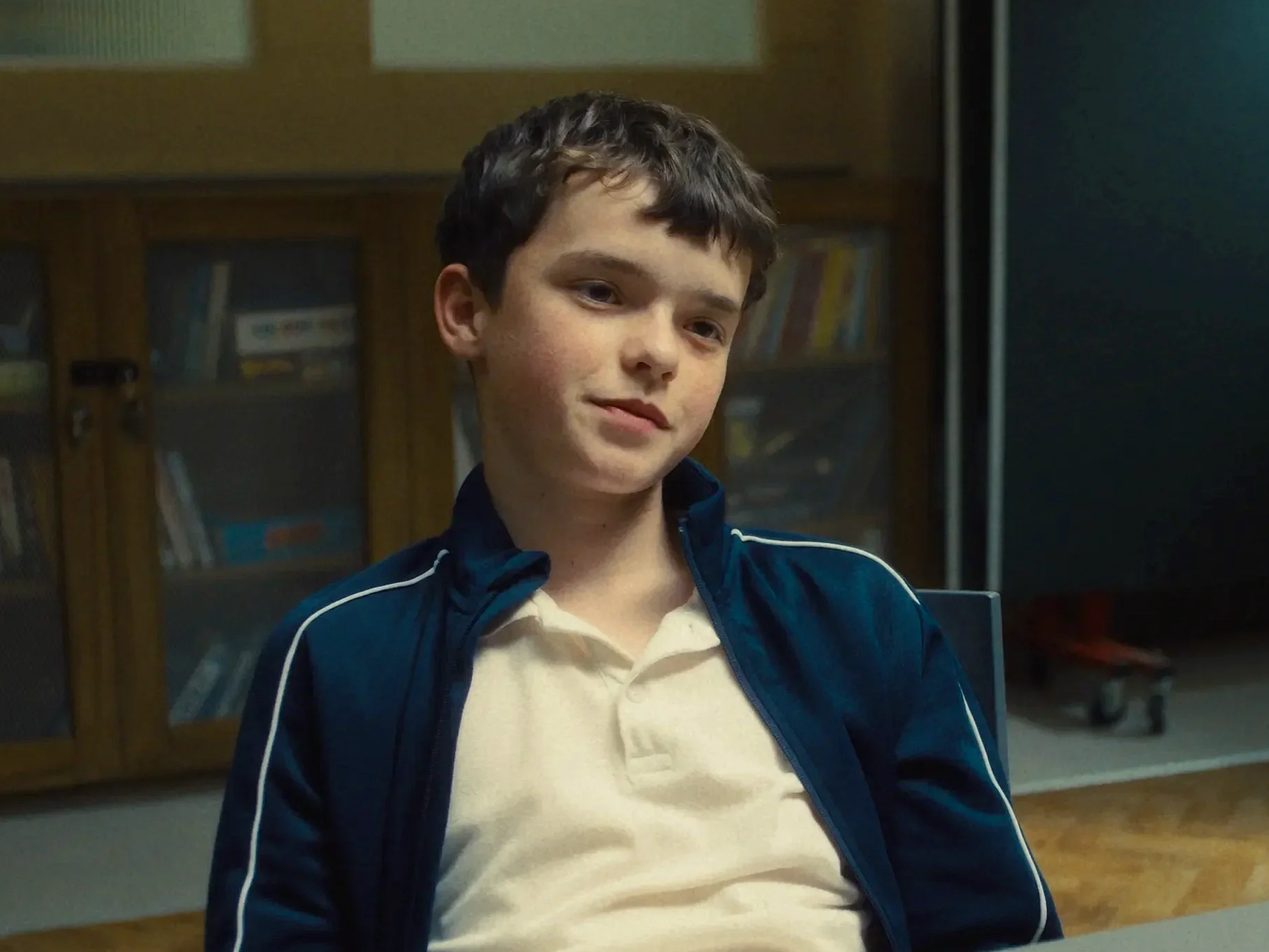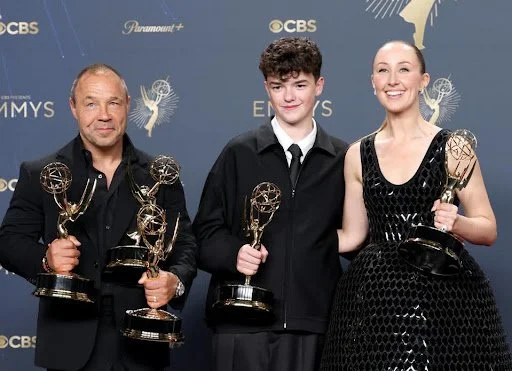‘Adolescence’ and the Second Screen Dilemma
Image Source: Courtesy of Netflix, Vogue article, “Here’s Everything You Need to Know About Adolescence, the British Netflix Drama That’s Quickly Gone Viral” by Emma Specter
Spoiler Warning: Adolescence
We lounged on the couch, snacks and drinks in hand, phones in pockets. This was a new tradition: a monthly friend-group movie night. The film for that evening had already been decided, Inglorious Bastards, a work sure to captivate the attention of 20-year-old college students. It was nice, this slowing down at the end of the week.
But our restlessness quickly became apparent. People got up for drink refills, side conversations simmered, and we shifted uneasily around the living room like a poor game of musical chairs. Phones slid out of pockets, moments of escape, their owner returning with questions of “what just happened?” and “who is that character?”
I was not immune, and this sudden realization of my faltering attention span was frighteningly real. As someone who reads daily, takes unplugged walks, and tries his best to limit screen use, I thought I could muster the determination for a couple of hours of uninterrupted viewing. But this isn’t an argument against new technology. While they certainly contribute to the psychological need for stimulants, I’m more concerned with a different idea—about how we engage with media despite all of the distractions.
The rise of the streaming service was rapid and cutthroat. Netflix paved the way, inviting viewers to view films on demand and in innumerable amounts, from the comfort of their own homes. It was no longer necessary to buy tickets, organize plans, and make the drive to your local cinema. Just sit on the couch, sift through options, pick one, and turn it off if you don’t enjoy. That last bit was the killer.
By placing control of the watching experience into the hands of the viewer, Media has to be catchy; it has to draw people in with the first bite. Couple that with the distractions of the home: technology, chores, family members, and suddenly, these shows not only have to immediately impress us, they have to battle against the growing encroachments in our lives. Hollywood was thrown into disarray.
At the beginning of this year, The Guardian published an article titled “‘Not second screen enough’: is Netflix deliberately dumbing down TV so people can watch while scrolling?” that reflected these concerns. But it also presented a chilling reality—Netflix is designing its “TV shows and movies to be watched while doing something else.” They're so aware of our poor attention that they’re simplifying narratives in order to keep audiences. By making characters “announce what they’re doing so that viewers who have this program on in the background can follow along,” they’re stripping complexity from the medium. Film has become a glorified background noise.
But honestly, I can’t say I’m surprised. This trend perfectly aligns with a significant decline in literary fiction sales since the early 2000s. Various estimates place the current literary fiction market at half of what it was in 2008, some even less. It’s telling that we as a society no longer place value, or our dwindling amounts of free time, into complexity. We want to be wowed, enthralled, bewitched by our stories, and take them at face value. We don’t have the time or attention to sink our teeth into narrative. Have we reached the end of nuance?
Photo Credit: Amy Sussman/Getty Images
But recently, a star has shone. In September, it won seven primetime Emmys, including best lead actor, two for best supporting actor, and best anthology series. It’s been a staple of internet frenzy and debate since its release in March. Adolescence, a Netflix mini series written and led by Stephen Graham, tells the story of Jamie, a 13-year-old boy accused of stabbing and killing a female classmate. The four-episode series shows key moments: the arrest, Jamie’s school, a psychological evaluation, and his family’s continuance in the aftermath. Interestingly, the show is not focused on the victim, but instead on the family of the killer and the psychology behind grief and love in the face of anger. It’s trying to ask why. Adolescence garnered 141 million views in its first ninety-one days on Netflix, making it the second most-watched show on the platform.
But when we take what we know about the second screen trend and Adolescence, something doesn’t compute. In many ways, Adolescence directly resists many of the industry-wide shifts towards audience retention, yet it still managed massive success. How?
A key feature of Adolescence is its hour-long, one-shot episodes. Each chapter of the story happens in real time, the camera moving through settings as if the viewer were there themself. When watching, you feel a visceral sense of guilt: this family’s life is crumbling around them and we’re an agentless accomplice. I thought this may be the answer to my question. The one-shot format, popularized recently by films like Birdman, 1917, and Stephen Graham’s own Boiling Point, is unforgiving for the distracted viewer. The first episode opens with a bang, literally, as police break down the door of the Millers’ home to arrest Jamie. As the camera waves quickly past a family frozen in terror, we catch brief glimpses of their normal life, their broken routines, and their characterized reactions to chaos. A single one-shot scene is infinitely complex; there is no moment for the actors to switch off, and equally, for the viewer to switch off. This format, however, is a double-edged sword.
Immediately following the opening is a five-minute drive in the back of a police van. There are a few lines of dialogue here, but not much. The focus is on Jamie beating against the car windows, crying, confused, and scared. There are long stretches of silence. This is the second screen nightmare of Netflix executives. This is when phones are pulled out, or worse, viewers click off. While the opening sets up excellent dramatic tension, these often actionless setting-transfers are key moments for viewer retention to plummet. The truth is, showrunners can no longer give viewers the benefit of the doubt. Any moment of downtime is profit loss, and in a Hollywood of overproduction and monopolization, there is no margin for error.
I think the answer to Adolescence’s success is not in its production or invention, but in the content it explores. During the investigation into Jamie, police uncover evidence of bullying and ostracization fueled primarily through social media and based in the context of ‘incel culture’. This unravels the monochrome victim-assailant archetype. The viewer sees a scared, lonely boy, and can’t help but pray for his innocence, hoping there was a mix-up in the evidence. He couldn’t have done this, right?
This is a visceral, divisive commentary about where we are as a society. Facing a rise of hyper-masculinity and a deconstruction of the nuclear family, people are lost, our perceptions of the world muddied with ambiguity. Adolescence managed to beat the second-screen pitfall through its visual representation of that uncertainty. It shows us a boy who’s fallen victim to this misguided world and has fallen to the depths of inhumanity as a result. Take a quick look at the Google Reviews for Adolescence and you’ll see just how this show has risen to the top of the charts.
Therewithin lies the key. Adolescence is so recognizably contemporary that it’s impossible for the viewer not to attach themselves to this community’s story. The show’s success was a result of its immediate involvement in social discourse, its relevance to the violence and extremism of a changing social world. While it doesn’t answer these questions and, in fact, leaves them ambiguously open, it hands responsibility to us to ponder why these things are happening and how we can move forward. It leaves a sour taste in the mouths of viewers, one they certainly can’t ignore, and certainly won’t forget.



